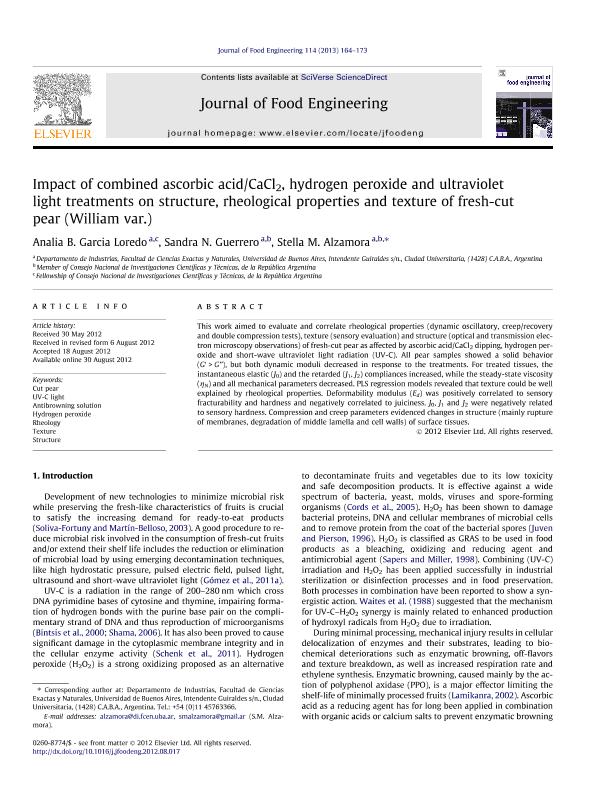Artículo
Impact of combined ascorbic acid/CaCl2, hydrogen peroxide and ultraviolet light treatments on structure, rheological properties and texture of fresh-cut pear (William var.)
Fecha de publicación:
01/2013
Editorial:
Elsevier
Revista:
Journal Of Food Engineering
ISSN:
0260-8774
Idioma:
Inglés
Tipo de recurso:
Artículo publicado
Clasificación temática:
Resumen
This work aimed to evaluate and correlate rheological properties (dynamic oscillatory, creep/recovery and double compression tests), texture (sensory evaluation) and structure (optical and transmission electron microscopy observations) of fresh-cut pear as affected by ascorbic acid/CaCl2 dipping, hydrogen peroxide and short-wave ultraviolet light radiation (UV-C). All pear samples showed a solid behavior (G′ > G’’), but both dynamic moduli decreased in response to the treatments. For treated tissues, the instantaneous elastic (J0) and the retarded (J1, J2) compliances increased, while the steady-state viscosity (ηN) and all mechanical parameters decreased. PLS regression models revealed that texture could be well explained by rheological properties. Deformability modulus (Ed) was positively correlated to sensory fracturability and hardness and negatively correlated to juiciness. J0, J1 and J2 were negatively related to sensory hardness. Compression and creep parameters evidenced changes in structure (mainly rupture of membranes, degradation of middle lamella and cell walls) of surface tissues.
Archivos asociados
Licencia
Identificadores
Colecciones
Articulos(OCA CIUDAD UNIVERSITARIA)
Articulos de OFICINA DE COORDINACION ADMINISTRATIVA CIUDAD UNIVERSITARIA
Articulos de OFICINA DE COORDINACION ADMINISTRATIVA CIUDAD UNIVERSITARIA
Citación
Garcia Loredo, Analia Belen; Guerrero, Sandra N.; Alzamora, Stella Maris; Impact of combined ascorbic acid/CaCl2, hydrogen peroxide and ultraviolet light treatments on structure, rheological properties and texture of fresh-cut pear (William var.); Elsevier; Journal Of Food Engineering; 114; 2; 1-2013; 164-173
Compartir
Altmétricas




